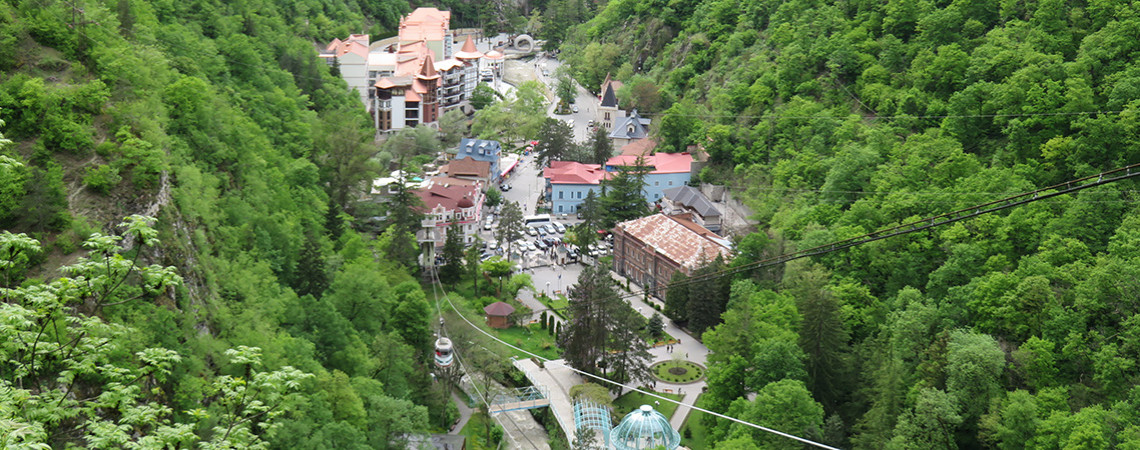In the Eastern part of Georgia, at the meeting of the Mtkvari; Borjomula; and Gujaretisckali rivers, there is the resort town named Borjomi. It lies on the slopes of the Meskheti mountain range, at an altitude of 800-900 m. To the east it is bordered by the Borjomi-Kharagauli National Park.
Borjomi’s internationally renowned for its curative mineral springs, and its crystal clear air saturated with the aroma of pines.
During the XV-XVIII centuries, in the place of the town, there were some villages named Nua , Phahpa, and Chala. In the same age, in the Uraveli valley, there was the village named Borjomi. They believe that this name was brought by refugees from a place conquered by the Ottomans.
The town had been known for ages as a healing place, but the date when the mineral springs officially opened is recognized as the year 1830. The mineral springs were accidentally found by some Russian soldiers. Soon the name of Borjomi spread throughout the empire. The city turned into a resort and summer residence for the Romanov royal dynasty. Production of Borjomi mineral water began in 1890. Borjomi got town status in 1918.
Borjomi is a spa and climatic resort. It has often been used as a recreation place by state and cultural figures like Maxim Gorky, Pyotr Tchaikovsky, Joseph Stalin, and others. Borjomi is famous for its mineral water bottling plant, other small businesses, its theater, and the local history museum. Borjomi also has a railway station.
Near the resort town of Borjomi there is the high-mountainous resort town of Bakuriani. It’s connected to the narrow-gauge Borjomi-Bakuriani rail line. Also located near Borjomi are the local resorts Tsemiand Tsagveri, the medieval fortresses of Petrestsikhe and Gogiastsikhe, and the lake Tabatskuri.



